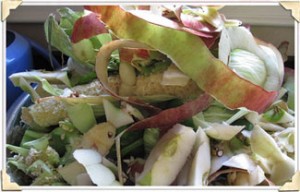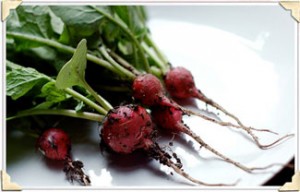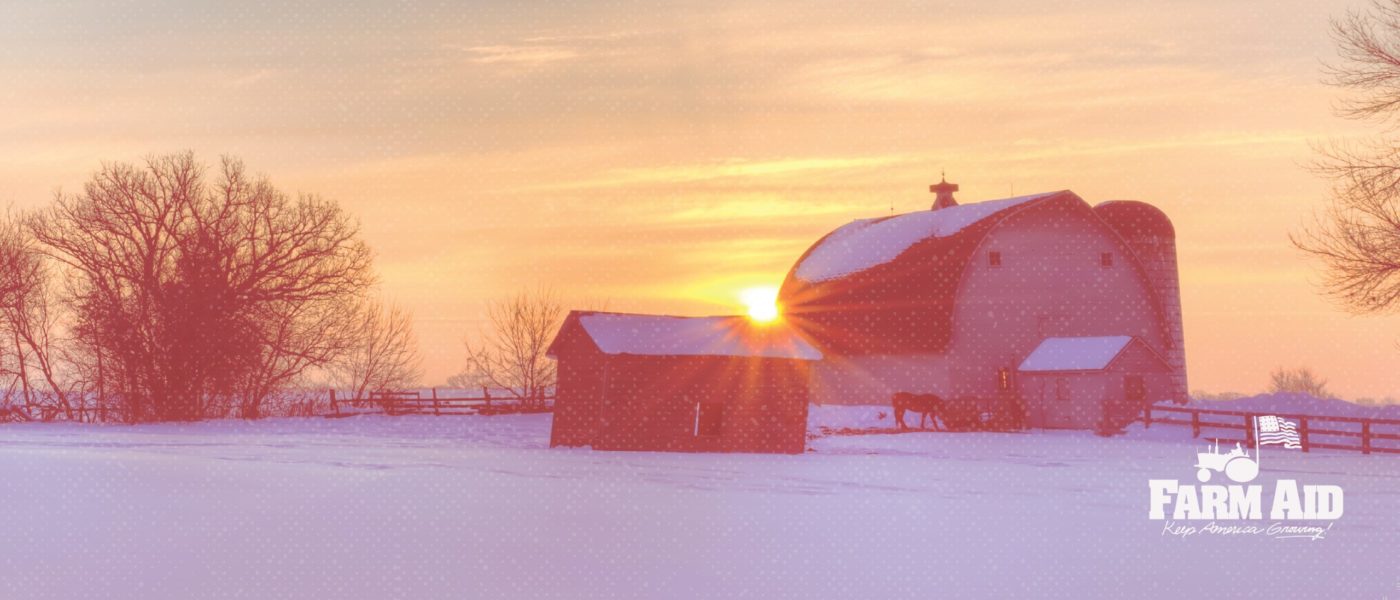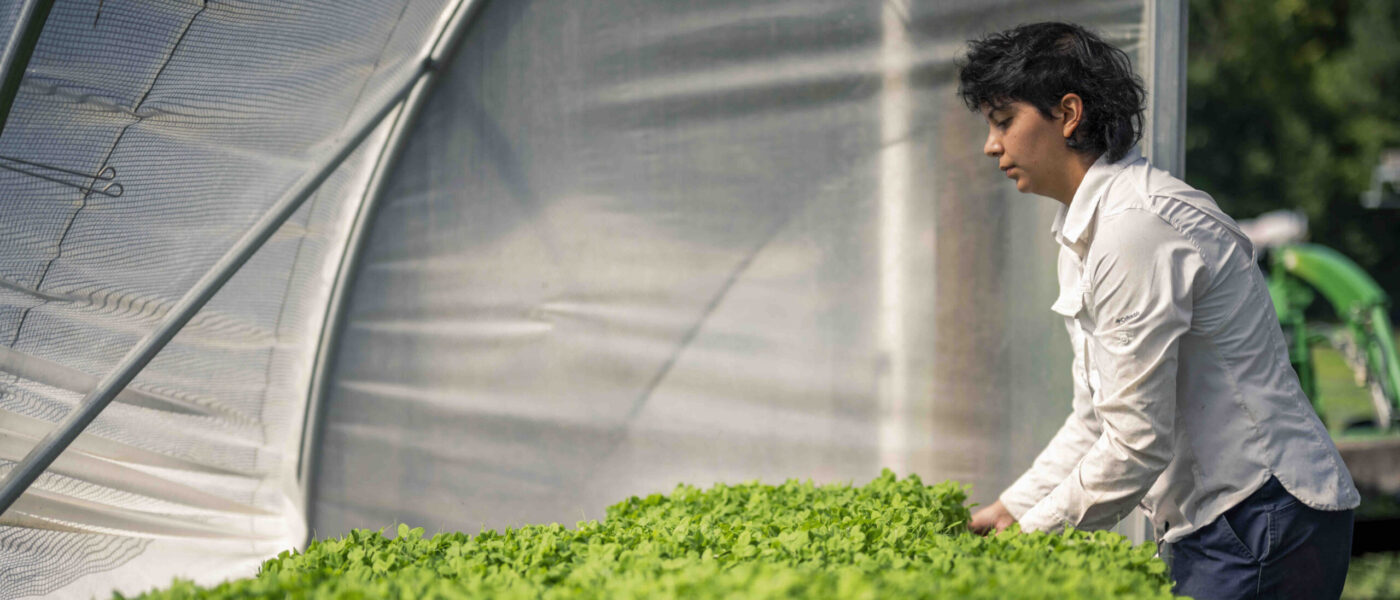After reading this month’s Farmer Hero profile of Tom Nuessmeier and the conservation programs he’s developed for his family’s farm, I began to think about my own conservation efforts at home.
There are thousands of articles out there on reducing the environmental impact of your home, but you’re reading this because you appreciate what family farmers do to provide good food while ensuring their land is in condition to grow for the generations to come. So I’m going to steer clear of discussing what kind of light bulbs I have and instead share a few easy food-related ways to conserve.
A Man With A Plan
The first method I recommend is taking a little time to plan meals. I get sad whenever I dig through the depths of my refrigerator to throw out spoiled food. Why did I end up with two heads of floppy grey broccoli and a pound of squishy potatoes? I started out with such good intentions to eat healthy home-cooked food and everything looked so tasty at the farmers market!
But I hadn’t planned out when or how I’d use those ingredients — and a few busy nights later (a night of takeout food here, a couple nights of using the other good stuff I bought at the farmers market there), and there I am throwing stuff away. If I’d taken a few minutes before I went shopping, I’d have food in mind to cook throughout the week and I’d know what I’d need to make them. It takes some of the guesswork out of evenings after work (“Hmm, what can we make from three pieces of bread, a knob of ginger, a half-package of bean sprouts and leftover veal cutlets? Uhh, feel like getting burritos instead?”) and makes for less once-good food filling up the garbage disposal or the trash can.
Speaking of Spoiled Food…
Why trash it when you can compost it? There are lots of different ways to compost (see just some of the different methods people use in this discussion thread on HOMEGROWN.org), but all of them have the goal of turning inedible food, and other organic matter like paper, into fertilizer. It’s basically recycling for food. Up to one-third of landfill waste is organic matter, so get composting!
Luckily for me, my city is part of a growing number of cities around the country that make it easy — I just throw carrot peels, onion skins, those yucky pieces of spoiled broccoli and whatever else is stinking up the fridge into a five gallon bucket stored next to the trash can. Does it stink? With a lid on, I never smell anything. When it’s full, I take it on down to the town dump or to the local supermarket that has a large bins out to collect it. Other people compost in bins (with or without the help of some friendly worms) or in piles in their backyard. No matter how you do it, it’s a fairly easy way to put today’s food scraps to good use as fertilizer that can help grow the food you’ll eat tomorrow.
“Willful Waste Makes Woeful Want”
But before you go cuckoo for composting and start throwing all your food in the bucket, use up some of those leftover bits in new ways. Have vegetables and herbs past their prime? Instead of watching them get sadder and sadder as each day passes in the fridge, toss what you’ve got in the freezer in a bag until you’ve got enough to make a stock for soups and other dishes. A fellow staffmember at Farm Aid uses the ends of vegetables and leftovers to help feed her dog. Since her pooch sometimes comes to the office, I can tell he’s happy with the arrangement!
Stocks don’t have to end with vegetables. If you roasted a chicken or bought one at the store, take the leftover carcass and you’ve got the makings for great stock there too. You can do the same with shrimp shells or other fish leftovers or other meat leftovers too. It can really transform your cooking. One of my favorite food writers, Michael Ruhlman said, “Slipping a little veal stock into our food has the same effect as Clark Kent slipping into a phone booth.”
Cooking bacon leaves me with a happy belly, but sad pipes if I pour the grease down the drain. Instead, store the grease in a jar and refrigerate it — add a little when you’re roasting potatoes or cooking vegetables or in tons of other recipes for a flavor boost.
Sometimes we must embrace the ingredients others might overlook. Roasted beets are great on salads, but don’t toss the beet greens in the compost bin just yet! If you cook them right, you’ll be happy. (Try out this recipe, which uses, you guessed it: bacon grease!) Meat can be the same way — sometimes, I get unusual cuts of meat in my CSA, but I just do a little research online and find out good uses for them. Around town, I see more and more restaurants specializing in “nose-to-tail” eating, where every part of an animal is used, which provides me inspiration. I haven’t made cockscombs (those floppy things on a rooster’s head) or fried pig tails at home yet, but I have enjoyed them out at a restaurant!
Get Vocal About Being Local
There are lots of people online who participate in “local food challenges” where they try to eat only food that was grown within a certain number of miles. While I think that’s really awesome and commendable, I’m not quite there myself. One smaller way to participate is to pick just a few foods to commit to buying locally and seasonally. I love asparagus and corn (especially corn!), but these days I only buy them when they’re available locally. Not only do they taste way better, but they didn’t fly halfway around the world to get to me.
Don’t want to make an official commitment like that? That’s totally fine too — maybe try to buy as much food at a farmers market or local farm stand as you can. Doing so will have an economic impact in your region and reduce the energy needed to get food to you.
Looking at the way we eat seems like as good a place as any to start examining how much energy we consume and for reducing our personal impact on the environment. Not to mention, using more of what we buy (from planning ahead and using ingredients we’d otherwise throw away) saves money. That sounds like a recipe for sustainability to me.
Further Reading
- This Farmer Hero profile is of Tom Nuessmeier, where he talks about the conservation programs he’s developed to keep his family’s farm growing food for generations to come.
- Want to learn more about composting? Check out Composting 101 on HOMEGROWN.org (Farm Aid’s online community of people interested in all things HOMEGROWN: growing, cooking, crafting, preserving, building, making and creating). If you’ve got compost and wondering what to do with it, here’s another HOMEGROWN.org discussion to check out.
- This discussion on Chowhound is all about leftover bacon grease and the dozens and dozens of tasty uses it has.
- Here’s a recipe to make homemade vegetable bouillion, so you can use whatever veggies you’ve got and turn them into a concentrated base for making stock or adding flavor to other foods.
- And here’s a recipe for veal stock, to turn you into a Superman or Superwoman in the kitchen.




